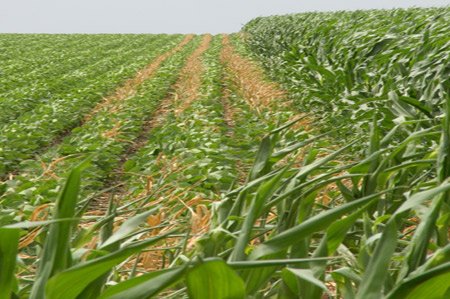 (Farm Futures) – The USDA August corn crop forecast predicted a large national crop, although not a record crop. Late-planting woes, especially in the western and northern Corn Belt, held back estimates somewhat. However, the market reaction indicates traders still think there is upside potential in the crop for future estimates.
(Farm Futures) – The USDA August corn crop forecast predicted a large national crop, although not a record crop. Late-planting woes, especially in the western and northern Corn Belt, held back estimates somewhat. However, the market reaction indicates traders still think there is upside potential in the crop for future estimates.
History would point that way too. An examination of 20 years by Jim Newman, a Purdue University ag climatologist, now retired, showed that crop estimates by USDA tend to go up from August forward in cool, wet years and down in dry, hot years.
However, Bob Nielsen, Purdue University Extension corn specialist, a native Nebraskan, says there are still some concerns before you can close the book on this crop. It’s far form in the bin yet.
One is maturity. You need 60 to 62 days after pollination to reach black layer, he says. That’s usually 30 to 35% moisture. If most corn pollinated the last week of July, that means you’re looking at black layer in very late September or early October. The cool spell in the first half of August didn’t help the cause. Corn matures based on heat units. While he believes most of the crop will reach maturity, he believes farmers in some areas may be dealing with lots of wet corn at harvest.
Second, there is the possibility of ear molds. In a similar season to this point, 2009, ear molds became an issue. That’s partly because fall was on the wet side in 2009. If molds begin appearing, scouting will be important to know which fields to harvest first, and which fields shouldn’t be used for certain uses, like livestock feed. The Gibberella mold produces a toxin that can affect livestock, especially hogs.
Greg Soulje, ag meteorologist, says the first half of fall should be good, but the back half could turn wet and nasty. With a late-maturing crop, the late maturity and nasty part of fall could overlap. Be on guard for nay opportunities to harvest this fall at reasonable moisture levels in the crop.




